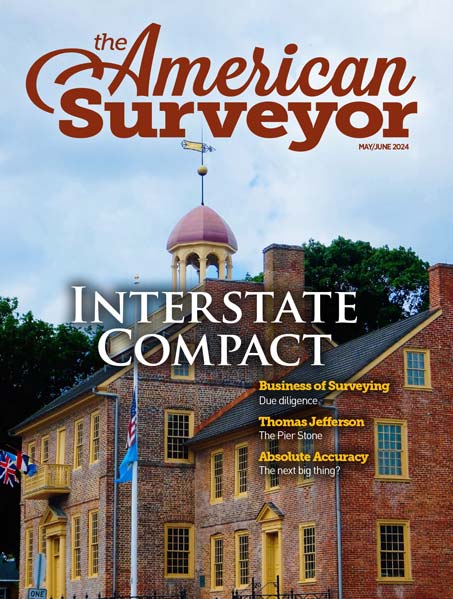All of the elements of geodesy are joined together in the National Spatial Reference System (NSRS). For almost 200 years, the National Geodetic Survey (NGS) and its predecessors have been using geodesy to map the U.S. shoreline, determine land boundaries, and improve transportation and navigation safety.
NGS evolved from the Survey of the Coast, an agency established by Thomas Jefferson in 1807. The creation of the United States’ first civilian scientific agency was prompted by the increasing importance of waterborne commerce to the fledgling country. As the nation grew westward, NGS’s mission began to include surveys of the North American interior.
With numerous surveys being conducted simultaneously across the growing nation, the surveyors needed to establish a common set of reference points. This would insure that surveyors’ maps and charts, which often covered hundreds of miles, would align with each other and not overlap. The common set of reference points they used were the benchmarks from the horizontal and vertical datums. Today, the complete set of vertical and horizontal benchmarks for the United States is known as the NSRS. This defined group of reference points acts as the foundation for innumerable activities requiring accurate geodetic information.
A United States triangulation network map from 1937. Developing a network of areas based on manual surveys using triangulation was a precursor to today’s modern National Spatial Reference System, which is overseen and continuously monitored by the Global Positioning System.
Think of it this way: When construction workers begin to build, they have to be sure that the area where they are building is free from dangerous power lines. The construction team will have to find out where the power lines are and make sure they are not building on top of them. To ensure success, the team needs to know the coordinates of the building site and of the local power lines. The NSRS provides a framework for identifying these coordinates. The team can then compare the two sets of coordinates and make sure they do not overlap.
To identify the benchmarks in the NSRS, NGS has traditionally placed markers, or permanent monuments, where the coordinates have been determined. These markers are brass or bronze disks (metals that sustain weathering) and are set in concrete or bedrock. Each marker is about 9 centimeters wide and has information about NGS printed on its surface.
With the advent of the Global Positioning System (GPS), NGS began to use different kinds of markers. These are made from long steel rods, driven to refusal (pushed into the ground until they won’t go any farther.) The top of each rod is then covered with a metal plate. This method ensures that the mark won’t move and that people can’t destroy or remove it. After tying these marks into a specific horizontal or vertical datum, the mark can be included in the NSRS database. Once the coordinates of the mark are entered into this database, they are available for anyone to use.
Source: NOS
NOS is one of five offices of the National Oceanic and Atmospheric Administration (NOAA), U.S. Department of Commerce (DOC). It is a scientific and technical organization of more than 1,700 individuals whose mission is to preserve and enhance the nation’s coastal resources and ecosystems along 95,000 miles of shoreline and 3.5 million square miles of coastal ocean. (http://oceanservice.noaa.gov/welcome.html)
